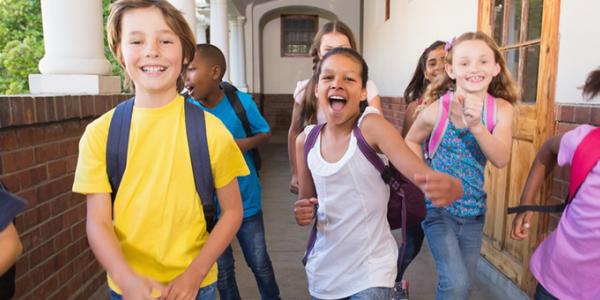Preschool children learn by having tangible topics to engage with about subjects they can observe and experience in a stimulating and dynamic environment, but where do we find such topics? My co-teacher, Amy, and I had long discussed using our preschool students’ interests as springboards into our curriculum, but what interests are adequate and appropriate? In the Fall, many children enjoyed playing with trains, and we successfully used that high level of interest to dive into our beginning curriculum. We explored trains for six weeks and the children’s learning was exciting and motivating. As we observed their interest and attention waning we wondered, “What topic now?” and looked to the children for more inspiration. Some children loved sweeping, others wanted to paint all day, and several thoroughly enjoyed running circles around the classroom loft. These were all areas of interest, but we doubted the adequacy and appropriateness of basing curriculum on such activities.
As we moved into winter and the landscape yielded to the cold weather, we spent one morning talking about the changes occurring outside. This led to children’s questions about the lack of birds—why some remained while others left the area. The children’s inquiries and observations were full of interest and knowledge. We had found our new topic!
We filled our room with books, pictures, photographs, and videos of winter birds. The children were especially interested in cardinals, so we learned about their habitat, habits, and appearance through books, websites, and phone calls to local pet store owners. We hung a bird feeder, sprinkled seeds outside our window, and waited. And waited. And watched. And waited. What a great lesson in patience! As we waited the children used various materials to create representations of their learning including painting pictures of male and female cardinals using tempra and oil paints, sculpting nests and eggs out of clay, and creating collages using colored papers and scissors.
Then a bird came! It was a house sparrow that the children named Fluffy. Soon birds were coming daily (including Duffy and Bob who were black-capped chickadees), and we began our long-term bird observation. The children were able to see various birds up close and observe their appearance, movements, and habits, all of which they recorded in journals with drawings, dictations, and photos we took using classroom iPads. Children would look for birds several times a day, eager to cry out the alarm that would have us all hurrying to the windows.
Our bird study lasted all Winter and continued into the Spring as we waited for the robins. Amy and I discussed the success of the bird unit and looked for another subject centered on the natural world. We talked during recess one day, our pockets filling with dandelions that the children collected enthusiastically. Dandelions? Could it be that simple? As it turned out, yes! We spent weeks observing, dissecting, collecting, studying, and documenting the plants. The children were happy to engage in lessons outdoors and once again their learning was fast, exciting, generated by their interest and inspired by the season.
Amy and I have been learning, too. Not all student interests are viable teaching topics, but ideas centered on the natural, tangible world are often adequate and appropriate for long-term study. The seasons gave us topics and nature provided the stimulating and dynamic environment, ensuring engaged learning for our young students.
Kathryn Maisonville is a Pre-K 3 teacher at Detroit Country Day School in Michigan and has taught preschool for twelve years
